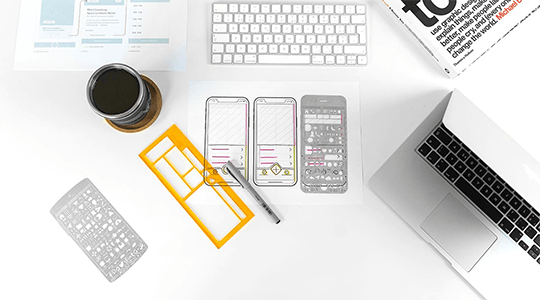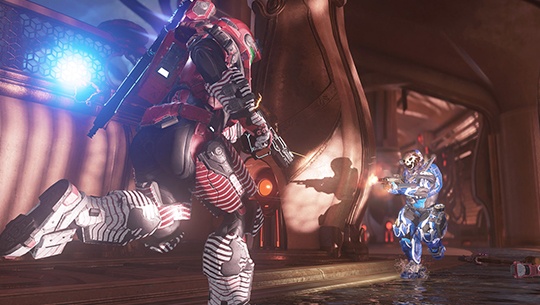If your business has an online element, there are clear benefits to be gained by implementing a web-based product configurator, and our article will guide you through the steps to give your business such a boost.
When browsing online for apparel, electronics, fashion accessories, and a myriad of items available via digital platforms, one encounters a range of product configurators. These tools empower customers to tailor and envisage their desired product before making a purchase, a feature that has surged in popularity and led to an unprecedented demand for a quality custom product configurator software.
Product configurators have demonstrated remarkable outcomes upon integration into online retail platforms, brand-specific web pages, and digital marketplaces. A noteworthy study by the Aberdeen Group illuminated the transformative impact of these tools, revealing that businesses adopting the configure-price-quote customization strategy witnessed a sales increase of over 105%. This statistic underscores the urgent need for businesses to consider product configurators in the e-commerce landscape.
For businesses with a digital footprint, the advantages of deploying a web-based product configurator are manifold and significant. Utilizing a web product configurator enhances the customer shopping experience and aligns with the growing trend toward more personalized online interactions. When employed effectively, a website product configurator serves as a bridge between consumer preferences and product offerings, enabling customers to shape their purchases to their exact specifications.
Moreover, the deployment of a web product configurator is a strategic move toward capturing the attention of a digitally savvy audience. Such tools cater to the desire for a more interactive and engaging online shopping journey where users can actively customize their products. It is not just about choosing a product; it's about creating an item that reflects personal tastes and needs, thereby fostering a deeper connection between the brand and its customers.
Our guide aims to help businesses enhance their digital strategy by implementing a web-based product configurator. This technology is not merely an add-on but a crucial component in today's competitive online marketplace, where differentiation and customization are essential to customer satisfaction and loyalty.
What Is a Product Configurator?
A product configurator is a digital tool often integrated into e-commerce platforms. It enables customers to customize products to their specifications before finalizing a purchase. At its core, a product configurator facilitates an interactive experience between the consumer and the product, enhancing the decision-making process through visualization and personalization.
Key features of a product configurator include:
- Customization. It allows users to modify various aspects of a product according to their preferences, such as color, material, or components.
- Visualization. This feature provides a real-time preview of the customized product, helping customers make informed decisions.
- Integration. A seamless fit with online platforms makes it a versatile tool across various digital landscapes.
- Efficiency. It streamlines the selection process, reducing the time from product customization to purchase.
The sophistication of a web product configurator extends beyond mere selection and customization. It embodies a critical component of the digital customer journey, offering a hands-on approach to product personalization. By engaging directly with a web-based product configurator, customers can experience a sense of ownership and connection to the product even before purchase, significantly enhancing customer satisfaction and loyalty.
A product configurator for a website transforms static online shopping into an interactive and engaging process. By integrating a website product configurator, businesses can provide a dynamic shopping experience that actively involves the customer in the creation process of their desired product. The implementation of a web product configurator on e-commerce sites effectively bridges the gap between consumer expectations and product offerings.
The utility of a website product configurator extends to various industries, from automotive to apparel, where product complexity and customer preference vary widely. A web-based product configurator simplifies these complexities, allowing for a straightforward and enjoyable customization process.
The benefits of deploying a web product configurator are manifold:
- Increased engagement. Customers spend more time interacting with products, leading to higher satisfaction rates.
- Enhanced customer experience. The interactive nature of customization improves the overall shopping journey.
- Boosted conversion rates. Personalized experiences are more likely to convert browsing into sales.
- Reduced return rates. With more explicit expectations set before purchase, returns decrease significantly.
As a result, integrating a product configurator into an e-commerce platform signifies a strategic enhancement to the digital shopping experience. It not only empowers customers through customization but also aligns with the evolving expectations for a more interactive and personal online shopping environment. As businesses continue to adopt web product configurators, they pave the way for a new era of digital commerce where customer engagement and product personalization play pivotal roles in the path to purchase.
Product Configurator Examples
In digital commerce, product configurators have emerged as indispensable tools, transforming how consumers interact with products. From customizing a sneaker to designing a car, these configurators offer a glimpse into the versatility and impact of personalization technology across various sectors. Highlighting examples from web-based platforms and real-world applications, we can observe the configurator's role in enhancing the consumer experience and fostering engagement.
1. Nike By You provides an exemplary case of a web product configurator in the apparel industry. Users can select a base model, alter colors and materials, and inscribe personal messages, viewing their creations in real time. This direct engagement elevates the shopping experience and deepens the brand's connection with its customers.
2. Tesla's Model Y configurator showcases how a web-based product configurator can revolutionize automotive purchasing. Potential buyers explore various options like paint colors, wheel designs, and interior materials, crafting a vehicle that matches their style and needs. Tesla's configurator simplifies the complex decision-making process associated with car buying, providing clarity and confidence to consumers.
3. IKEA's Planning Tools represent a suite of web product configurators that assist customers in designing spaces with furniture that fits their aesthetic and functional needs. From kitchen planners to storage solutions, these tools make interior design accessible and enjoyable, allowing for a blend of practicality and creativity in home decor.
4. Dell's Custom Laptops and PCs service illustrates how technology firms employ web product configurators to cater to diverse consumer needs. Customers can select components, software, and services to assemble a computer that aligns with their performance requirements and budget constraints.
Product configurators stand at the intersection of technology and customer-centric retail, offering insights into future trends in digital commerce. By examining these examples, it becomes evident that configurators enhance the shopping experience and serve as a bridge between consumer desires and product offerings. As technology evolves, so will the capabilities and applications of product configurators, further enriching the digital and real-world commerce landscape.
Why Choose Web for Your Product Configurator?
Selecting the appropriate platform for deploying your product configurator represents a critical decision that significantly influences its accessibility and user engagement. The choice between desktop applications, mobile apps, and web-based solutions each comes with distinct advantages and implications for the visibility and utility of your product customization tool.
Desktop applications stand out for their capacity to support complex configurators encompassing various product models and components, sophisticated functionalities, and substantial file sizes. This platform suits scenarios where the anticipated user base is expected to dedicate considerable time to intricately customizing products, adjusting each minute aspect to their preference. The robustness of desktop apps makes them ideal for intricate product configurators that demand high performance and detailed modifications.
Conversely, mobile applications offer a more streamlined and portable approach. While they may not match their desktop counterparts' detailed fidelity or performance capabilities, mobile apps excel in convenience and ease of use. With the ubiquity of smartphones and tablets, users can effortlessly access a mobile app from any marketplace, enabling them to engage with a product configurator whenever they find a moment. This accessibility, however, is tempered by the prevalent reluctance among many users to download new applications, especially when their devices are already cluttered with numerous others.
The option of a web-based product configurator emerges as a compelling alternative, marrying the benefits of accessibility and ease without the need for additional downloads. A web product configurator operates seamlessly within a user's browser, eliminating the barriers of platform-specific applications. Users across diverse devices can instantaneously access the configurator on a website, initiating their product customization journey with unparalleled ease and speed compared to desktop and mobile app-based solutions.
In essence, the choice of platform for a product configurator — whether a web product configurator, a mobile app, or a desktop application — hinges on the specific needs and behaviors of the target user base as well as the complexity and features of the product itself. Each platform offers unique advantages, from the detailed customization potential of desktop applications and the on-the-go accessibility of mobile apps to the broad accessibility and user-friendly interface of web configurators. Businesses must carefully consider these factors to select the most effective and engaging platform for their product configurator, ensuring it aligns with user expectations and product customization goals.
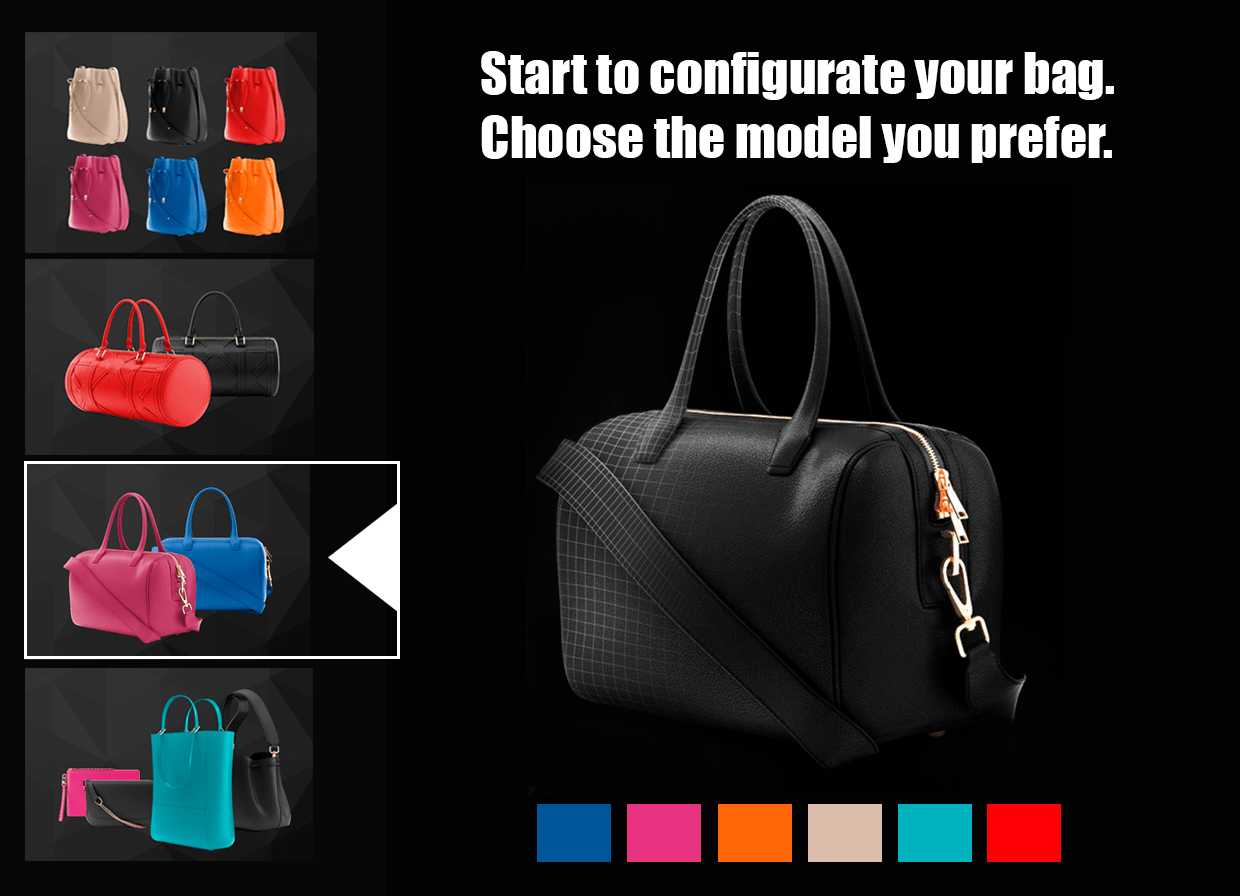
Benefits of an online product configurator
Apart from fulfilling the function of showing a product and its variations to potential users, online product configurators have multiple benefits for businesses and the users who end up tinkering with them.
For businesses:
Faster lead time
Compared to traditional approaches like static product pages and marketing pitches from the sales team, configurators help you close deals faster and in greater quality. Because customers see your product in all of its available forms and get to choose the one they like best, most of their questions are addressed immediately and they can move on to purchase. When they face a situation when the product page doesn’t tell them as much about the product, they are much more likely to check with other providers, and you might lose them as a customer.
Easier sales team work
Customizers are a big help to sales teams, relieving them of a large burden and giving them more flexibility to focus on other tasks. For example, if they spent a lot of time working with customers on the version of the product they would like to order before, now, most clients will be able to go through the selection process independently, and the sales team will devote their time to other initiatives and responsibilities.
Better feedback
Many people view configurators as a tool solely for attracting clients and sales, overlooking their other great uses. One of those is analytics. You can track user behavior in the customization app and get valuable data about the product that you would otherwise rarely get through other means (reviews, emails, etc.). For example, you can see which variations of your product are most popular and which should be removed, improving the user experience over time.
Reducing errors
For those in the business of selling stuff, errors and canceled orders are just an inevitable part of the trade. However, configurators work wonders in reducing the rate of erroneous and canceled orders. Users are able to get a much more accurate demonstration and understanding of their product, make more informed choices, so the odds of the end product meeting their expectations is much higher. Accordingly, they are much more likely to be satisfied and tell others about their positive experience.
For clients:
Explore more aspects of the product
A customization app gives clients a wide array of options to interact with your inventory, and this corresponds to a deeper understanding of the products. The clients are not just able to see the model from one side and read a description, but also rotate it and zoom in, see their choices reflected on the model in real time. They better understand which changes affect price and imagine what their future interactions with the real thing will be like.
A chance to express creativity
The importance of customization options cannot be understated, because coming face-to-face with a configurator brings out our inner artist. Clients follow their personal preferences and creative thoughts to create unique and interesting models, and to them, it feels like they played a major role in their creation. This also gives them a feeling of commitment – since they invested time and effort, they should bring the process to a close and purchase.
Fast updates
If the configurator is set up for real-time updates, users can see any changes they made visualized in real-time – usually a fraction of a second. This provides a much smoother shopping experience, as they do not need to reload the page or navigate to another page matching their selected preferences.
Development – Use Existing Web-Based Product Configurator Software or Make Your Own?
There are two major approaches to setting up a configurator – you can use software already built for businesses or create a custom solution of your own. Both approaches have advantages and disadvantages, but in terms of popularity, custom builds take the cake.
The software market for configurators is quite expansive today, with dozens of popular web options (Simplio3D, BrioVR, and Dynamaker, to name a few) available to businesses. They allow you to launch your solution quickly, because the interface and most interactive options are already included in the package. The drawback here is that most of these services are like fixed templates: you have little control over the design, mechanics, and function of the app.
Creating a custom web product configurator grants you total freedom in the design of the application, how it performs and scales, and which options/mechanics can be integrated. Undoubtedly, it takes longer to create an application from scratch than it is to upload a 3D model and add some texts, but the custom approach is better at addressing the individual needs of your business.
You don’t even need to hire a development team full-time to get the project done, since you can partner with outsourcing firms that will handle the work at a reasonable price.
How to Create a Web Configurator
If you choose this type of solution for your business, the first step in development will be selecting the appropriate customizer type:
- Static (2D). This is the least impressive option, and the least expensive one to make. Users are presented with a 2D image or render of the product, but do not have the option to move it around. Furthermore, any customizations that they apply are not reflected immediately, and oftentimes this happens through page reload or navigation to another page.
- Responsive (3D). A true 3D customizer gives users spatial options like zoom and rotation, with the 3D model giving a lifelike view of the item. Additionally, any changes made to the item are reflected near-instantly, so the user can stay on the page and keep customizing with no interruption.
- Integrated. An integrated customizer runs directly on the product page and is intricately connected to other features and services of your store, such as checkout, login, and comparison. Thus, users can access the app while doing other things on the website at the same time.
- Standalone. This is a separate section/page of your website solely dedicated to the configurator. Thus, users are not able to use the service in conjunction with other services of your website, and the checkout process is also created separately for orders made in standalone apps.
The next steps of development
Once you have made up your mind about the type of configurator you want to use, you should also take time to gather the needed specialists and form your tech stack. For example, you will probably need several 3D artists or a whole team, depending on how many models are needed, and equip them with the proper 3D modeling software.
Another major consideration will be the engine used to envelop the model, interactive options, and other features. At Program-Ace, we have had the best experiences working with PlayCanvas, Unity, and Unreal Engine. All 3 options are best-suited for working with 3D content and applying changes in real-time.
With the preparatory phases complete, you can work on creating the needed assets, art, and interactive software. This process can take weeks or months, depending on the amount of content and complexity of the application. The application undergoes many rounds of QA review and improvements before final release.
How Program-Ace Created a Web Product Configurator
Our company has successfully completed dozens of configurator projects, wit "Real-Time 3D Car Configurator" being the most recent.
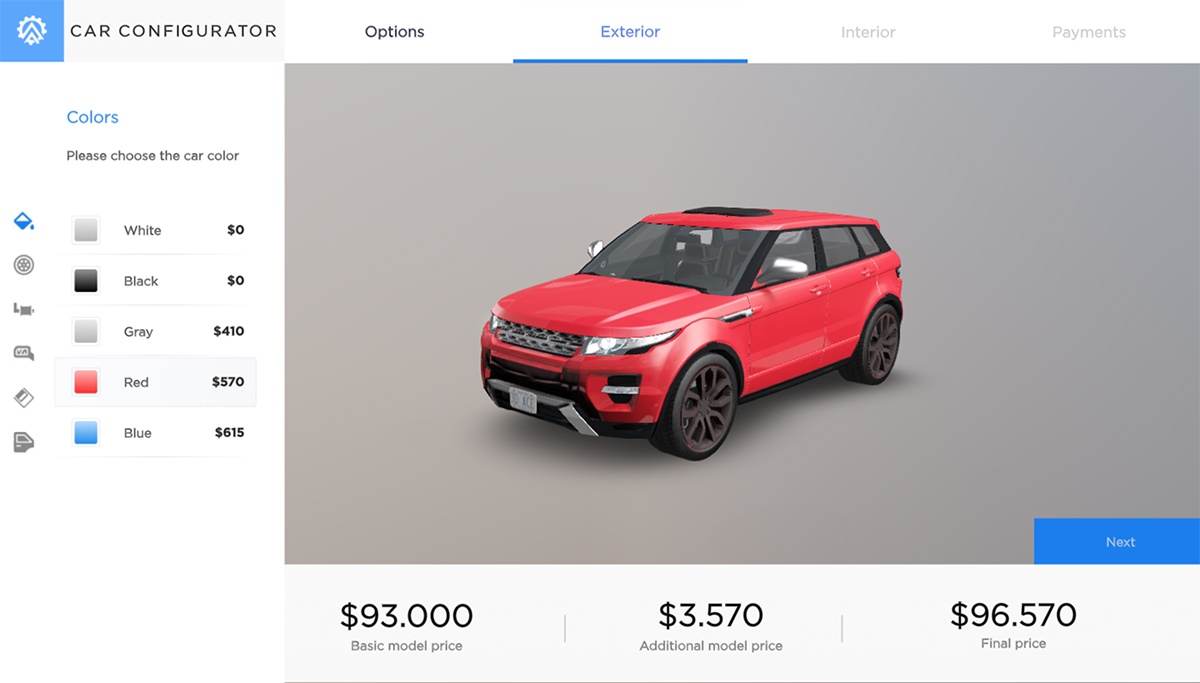
This configurator features a large (family-size) car visualized in 3D with various interactive options. Users have great freedom to choose from multiple versions varying in price and performance, as well as customizing the car parts and accessories. The choices of color, wheel model/style, sunroof, windows, etc. are reflected in real time, and users can fill an order from within the interface.
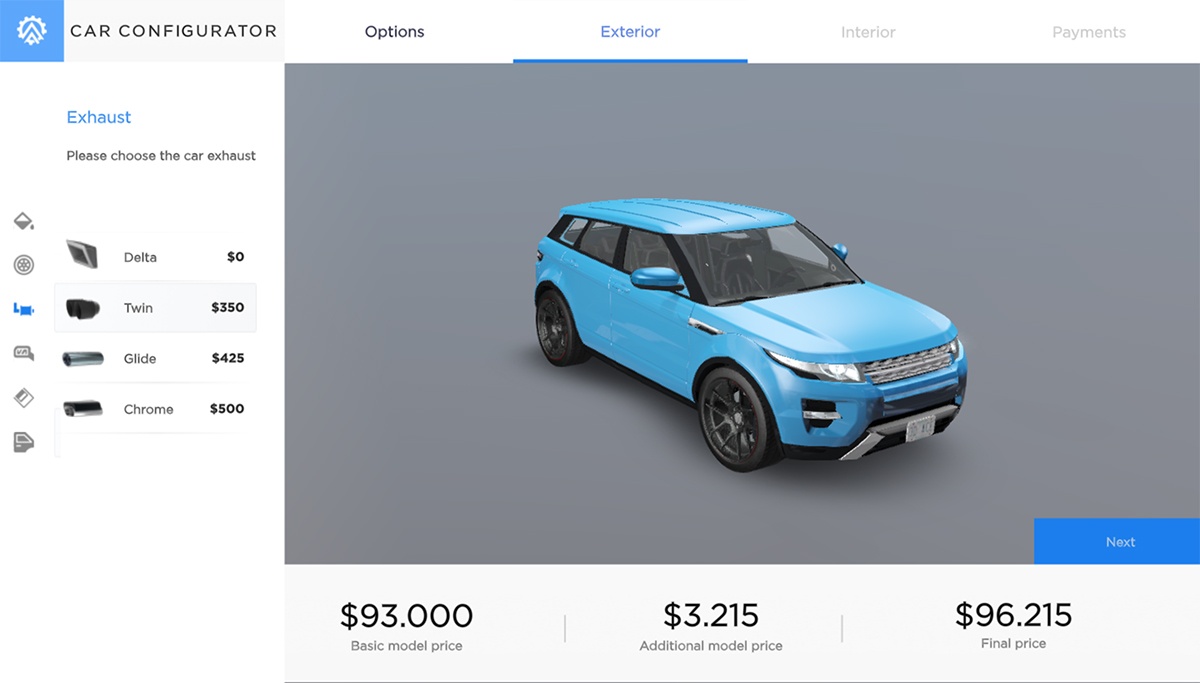
We built this solution based on our vast experience in creating similar solutions for major automakers, and chose PlayCanvas as the main tool to do it with. Despite having a relatively small team working on the project, we delivered an application that works smoothly, looks sleek, and adds great value to any business selling cars.
Program-Ace's Real-Time 3D Car Configurator is a paradigm of how automotive product configurators can transform client engagement and interaction. Developed to propel customer interactions to unparalleled heights, this immersive solution operates entirely in real-time, offering an array of interactive options combined with detailed graphics. The configurator showcases a prototype vehicle that can be easily swapped out for various car models, illustrating the versatility of a business's product offerings.
Focusing on delivering an engaging user experience, Program-Ace concentrated on evoking positive emotions through the configurator's interaction. Key to this experience are:
- the fast loading times;
- a responsive interface that functions flawlessly across different browsers and extensions;
- a rich visual section brimming with detailed information.
The configurator's interface has been meticulously designed to be user-friendly, requiring minimal actions to navigate, devoid of expanding menus or unnecessary scrolling, and clutter-free from superfluous details.
Aligning business objectives with user desires was a challenge that was met by packing the visuals into full 3D, complete with high-quality automobile models that exhibit realistic interactions with light and reflections. Such visuals assist users in overcoming initial hesitations and allow for a comprehensive evaluation of the product from every angle.
Program-Ace's approach to developing this configurator prioritized ease of use without compromising functionality or visual quality. The development process involved:
- selecting the vehicle type for display;
- determining customization options;
- ensuring the software's smooth operation.
The collaborative efforts of developers and artists, utilizing tools like PlayCanvas, Photoshop, Illustrator, and 3DS Max, resulted in a configurator that exceeds client expectations.
The impact of product configurators spans multiple dimensions:
- Personalization at scale. They democratize custom-made products, making them accessible to a broader audience.
- Informed decision-making. Real-time feedback and visualization aid consumers in making choices that are right for them.
- Customer engagement. The interactive nature of configurators increases time spent on the site, fostering a deeper brand connection.
- Operational efficiency. By automating the customization process, configurators streamline production and reduce errors.
Potential features of your web based product configurator
If you go with a custom development approach, you will have few (if any limits) in implementing features and functionality in your app. Below are some feature ideas that you may want to consider:
- Real time updates. Choosing any customization option is instantly reflected on the visual model.
- Custom print/design. Users can draw/create their own designs to be superimposed on the item, or even create a custom form.
- Price changes. Real-time updates also change the price displayed for the product.
- Create/save a document. Customers can save their customizations for later purchase or submit their preferences right away in a document/form.
- Switch to the next product. Customers can quickly switch between product types and models without leaving the page.
Finding Qualified Web Configurator Development Services
If you want a dedicated and qualified partner that will take care of all your configurator needs, look no further than Program-Ace. As a professional software development service provider, we have been building business-focused solutions for over 2 decades, and this includes numerous configurators in various industries.
Our team includes many developers, designers, modelers, and business development experts, so we truly understand what it takes to build a solution that will work flawlessly while fulfilling business goals like improving sales, drawing in new customers, building customer-company trust, etc.
All it takes to get started on your project is a message or phone call. Feel free to contact us today, and we will be thrilled to discuss our approach and how we can push your business towards greater success.

